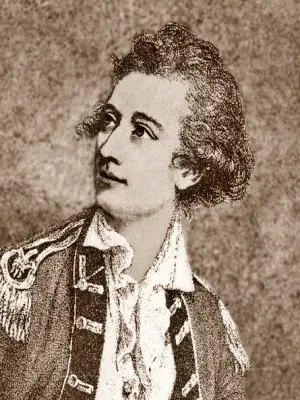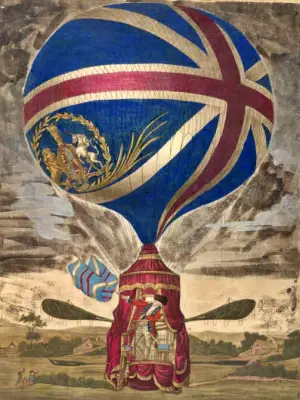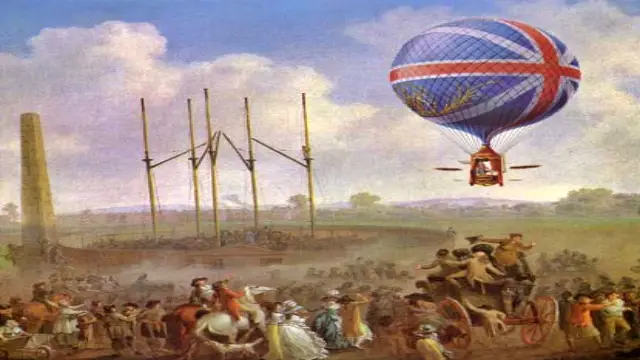In the late 18th century, when most people were still grounded by gravity, Vincenzo Lunardi, an Italian adventurer and secretary to the Neapolitan Ambassador in London, soared into the skies. Known as The Daredevil Aeronaut, Lunardi became a household name thanks to his daring hydrogen balloon flights. His exploits not only thrilled crowds but also sparked fashion trends, scandals, and even tragedy. This article dives into Lunardi’s fascinating life, his groundbreaking flights, and the cultural impact of his adventures.
The First Flight That Made History
On September 15, 1784, Lunardi took off from the Artillery Grounds in London before a massive crowd of 200,000 spectators. Among them was none other than the Prince of Wales. The excitement was palpable, though the impatient audience pushed Lunardi to launch earlier than planned.

Accompanied by a dog, a cat, and a pigeon, Lunardi ascended with a partially inflated balloon. As he drifted north toward Hertfordshire, he stopped briefly at Welham Green—now famously called Balloon Corner—to release the dog and the airsick cat. Finally landing near Standon Green End after covering 24 miles in just two and a half hours, Lunardi instantly became a celebrity.
This flight wasn’t just about breaking records; it inspired a nationwide craze. People started wearing Lunardi skirts and Lunardi bonnets, turning ballooning into both a scientific marvel and a fashion statement.
The Infamous Flight with Mrs. Sage
Lunardi’s next big adventure came on June 29, 1785, at St George’s Fields in London. Tickets for the event ranged from “very safe” seats at 2/6d to “very best” seats at 3/6d. Originally, Lunardi planned to fly alongside three others: his wealthy friend Thomas Biggin, Colonel Hastings, and Mrs. Letitia Sage, an actress known for her striking figure.
However, there was one problem—Mrs. Sage hadn’t mentioned her impressive weight of 200 pounds! Realizing this would make the balloon too heavy, Lunardi and Colonel Hastings graciously stepped aside, leaving Mrs. Sage and Mr. Biggin to take the gondola alone.
As the balloon rose, chaos ensued. Due to Lunardi’s oversight, the door wasn’t properly laced up, leaving Mrs. Sage scrambling on all fours to fix it mid-air. Clad in a low-cut silk dress, she unintentionally created quite the spectacle below. The crowd assumed Mr. Biggin was administering some form of “aerial first aid,” sparking rumors that they had joined the Mile High Club.

Unaware of the gossip swirling beneath them, Mrs. Sage and Biggin enjoyed a leisurely picnic of cold chicken and Italian wine until their balloon landed in a field at Harrow. Their descent ruined part of a farmer’s hay crop, but quick-thinking Harrow schoolboys saved the day by collecting money to pay him off. They even carried Mrs. Sage triumphantly to a nearby pub. She went down in history as England’s first female aviator—and possibly its first member of the Mile High Club.
Exhibitions, Scotland, and Near Disasters
After the buzz of his early flights, Lunardi capitalized on his fame by exhibiting his balloons. In October 1785, he traveled to Scotland, where he made five flights. One nearly ended in disaster when he crashed into the North Sea off Berwick and had to be rescued by a fishing boat. Undeterred, Lunardi continued to draw crowds by displaying his inflated balloon in unconventional venues like St Mungo’s Cathedral in Glasgow (admittance 1/-).
But not every flight ended well. On September 20, 1786, Lunardi prepared for what should have been his twelfth ascent in Newcastle upon Tyne. While filling the balloon with hydrogen gas, a spill of sulphuric acid caused panic among the men holding the ropes. As the partially filled balloon shot skyward, it dragged along Mr. Ralph Heron, the 22-year-old son of the Under-Sheriff of Northumberland. Tragically, the balloon inverted, and Heron plummeted to his death.
Though Lunardi issued a broadside defending himself, public opinion turned against him. Criticism forced him to leave Britain, but he found new audiences in Portugal, Spain, and Italy. In 1789, he even ascended Mount Vesuvius in a daring feat of exploration.
Cultural Impact and Legacy
Lunardi’s influence extended beyond aviation. He became a symbol of innovation and daring, inspiring poets like Robert Burns. In his poem To A Louse, Burns humorously references a “Lunardi hat,” showing how deeply Lunardi had embedded himself in popular culture.
His flights also highlighted humanity’s eternal desire to conquer the skies. Though modern air travel has far surpassed the capabilities of 18th-century balloons, Lunardi paved the way for future pioneers. His courage and showmanship remind us that progress often begins with taking bold risks—even if those risks sometimes lead to mishaps.
Conclusion
Vincenzo Lunardi may have been driven out of Britain under a cloud of controversy, but his legacy endures. From his record-breaking flights to the scandalous rumors surrounding Mrs. Sage, Lunardi’s story is one of ambition, ingenuity, and human folly.
Today, we remember him not just as The Daredevil Aeronaut but as a man who dared to dream bigger than the world around him. Whether soaring through the clouds or crashing back to earth, Lunardi proved that the sky was no longer the limit—it was merely the beginning.
What do you think of Lunardi’s wild adventures? Share your thoughts below!

